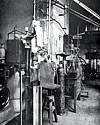
On 10 Jul 1908, the Dutch physicist Heike Kamerlingh Onnes made helium liquid at a temperature of 4.2 K (about -269 ºC). He had worked for many years to liquify this element which persisted as a gas to the lowest temperature. Using liquid air to produce liquid hydrogen and then the hydrogen to jacket the liquefaction apparatus, he produced about 60 cubic centimeters of liquid helium. The gas was liquefied by compressing it, cooling it below the inversion temperature and then allowing it to expand, which causes further cooling resulting in the liquefaction of some of the gas. Onnes received the 1913 Nobel Prize in Physics for his low temperature work. Read more about his Cryogenic Laboratory at Leyden University in this illustrated article from Scientific American Supplement (1912).

On 9/10 July 1856, at the stroke of midnight, a Serbian-American inventor was born. He is considered by many to be the founding father of modern electrical technology. Tesla has been credited as the inspiration for radio, robots, and even radar. His advancements include alternating current, fluorescent and neon lighting and wireless telegraphy. Today's book pick is: Wizard: The Life and Times of Nikola Tesla : Biography of a Genius (Citadel Press Book), by Marc Seifer, who writes a definite and illuminating biography, which reveals the many complex facets of Tesla’s personal and technical life. Tesla was far ahead of his time, and often in conflict with Edison, and later Westinghouse. The author also details many of Tesla's idiosyncrasies with fascinating anecdotes. Seifer present much new material culled from a wide range of manuscripts, articles and archival sources. The result is a much more accurate picture of Tesla, that has been reviewed as “Far and away the best job among Tesla biographies.”
It is available from Amazon, typically about New from $21.91. Used from $2.60. (As of earlier time of writing - subject to change.)
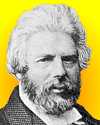 | A comparatively small variety of species is found in the older rocks, although of some particular ones the remains are very abundant; ... Ascending to the next group of rocks, we find the traces of life become more abundant, the number of species extended. |
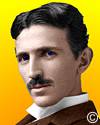 | Ere long intelligence—transmitted without wires—will throb through the earth like a pulse through a living organism. The wonder is that, with the present state of knowledge and the experiences gained, no attempt is being made to disturb the electrostatic or magnetic condition of the earth, and transmit, if nothing else, intelligence. |
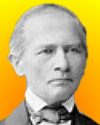 | Sir,—The Planet [Neptune] whose position you marked out actually exists. On the day on which your letter reached me, I found a star of the eighth magnitude, which was not recorded in the excellent map designed by Dr. Bremiker, containing the twenty-first hour of the collection published by the Royal Academy of Berlin. The observation of the succeeding day showed it to be the Planet of which we were in quest. |
| Before you look at today's web page, see if you can answer some of these questions about the events that happened on this day. Some of the names are very familiar. Others will likely stump you. Tickle your curiosity with these questions, then check your answers on today's web page. | |
| Births | |
 | On 9/10 July 1856, at the stroke of midnight, Serbian-American inventor Nikola Tesla was born. He designed and built the first alternating current induction motor in 1883. George Westinghouse bought his patents for his system of alternating-current dynamos, transformers, and motors. They were deployed at the first large-scale hydroelectric generating plant in the world, built in 1895. Which body of water powered the Tesla-Westinghouse power plant? It first supplied which nearby city? |
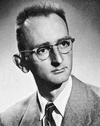 | Owen Chamberlain, born on 10 July 1920, was an American physicist who shared the Nobel Prize for Physics in 1959 with Emilio Segrè for their discovery of a previously postulated subatomic particle. This was the second particle of its ilk to be discovered and led directly to the discovery of many additional types of such particles. What was this particle they discovered? |
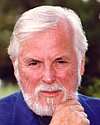 | Edward H. Lowe, born 10 Jul 1920, joined his father’s company in Cassopolis, Michigan, after leaving the Navy. The company sold industrial absorbents, including sawdust and an absorbent clay called Fuller’s Earth. In 1947, Lowe suggested a new use for the clay to his neighbor. What was Howe's inventive new use? |
| Deaths | |
 | Johann Gottfried Galle (1812-1910) was a German astronomer who on 23 Sep 1846, was the first to observe a planet, whose existence had been predicted in the calculations of Le Verrier. Le Verrier had written to Galle asking him to search for the new planet at a predicted location. Can you name this planet? |
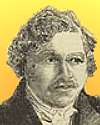 | On 10 Jul 1851, a Frenchman died, who is most remembered for his invention of a light-sensitive photographic process. He was also a physicist, painter, photographer and tax collector. Can you name this inventor? |
| Events | |
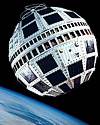 | On 10 Jul 1962, the first U.S. geosynchronous communications satellite, was launched from Cape Canaveral, Florida, to relay TV and telephone signals between the United States and Europe. This began a new era of easier access to information, with much greater speed that then ever felt possible. It allowed both voice and video to be beamed between two places. What was the name of this satellite? |
 | On 10 Jul 1908, Kamerlingh Onnes liquefied a certain element at –269°C. What is the name of this element? |
Fast answers for the previous newsletter for July 9: sewing machine • nuclear winter • King Camp Gillette • the decade including the year 1893 • nobelium.
 If you enjoy this newsletter, the website, or wish to offer encouragement or ideas, please send feedback by using your mail reader Reply button.
If you enjoy this newsletter, the website, or wish to offer encouragement or ideas, please send feedback by using your mail reader Reply button. Your click on a Facebook, StumbleUpon, or other social button on the site webpages is also a welcome sign of appreciation. Thank you for using them.
© This newsletter is copyright 2020 by todayinsci.com. Please respect the Webmaster's wishes and do not put copies online of the Newsletter — or any Today in Science History webpage. (If you already have done so, please remove them. Thank you.) Offline use in education is encouraged such as a printout on a bulletin board, or projected for classroom viewing. Online, descriptive links to our pages are welcomed, as these will provide a reader with the most recent revisions, additions and/or corrections of a webpage. For any other copyright questions, please contact the Webmaster by using your mail reader Reply button.
--
If you do not want to receive any more newsletters, Unsubscribe
To update your preferences and to unsubscribe visit this link
Executive Real Estate Business Class
-
"It was like a man with wings. It wasn't like anything you'd see on TV or in a monster movie." ...
About the publisher
Search This Blog
Blog Archive
-
▼
2020
(1542)
-
▼
July
(200)
- PHOTOGRAPHY: The danger of documenting sharks
- Meet The Serial Killer Who Ate His Victims Because...
- The Roundup Top Ten from History News Network
- On This Day for July 31 - Lunar Roving Vehicle fir...
- Newsletter for Friday 31 July.
- Lockdowns killing more children than COVID + Docto...
- YOUR WEEKLY ESCAPE: Revisiting an iconic Nat Geo c...
- July 31: The Pilgrim Fathers Depart and the Battle...
- ANIMALS: The dog that got COVID-19
- On This Day for July 30 - Death of Otto von Bismar...
- Newsletter for Thursday 30 July.
- Frontline Docs 2nd Video Press Conf at SCOTUS We h...
- BREAKING NEWS: First U.S. dog to test positive for...
- July 30: First Defenestration of Prague, the 1st O...
- Demystified: Why Do Wolves Howl?
- The Champs Are Back on Forged in Fire Tonight
- SCIENCE: A rush to Mars during a rough patch at home
- Breaking News from History News Network
- On This Day for July 29 - National Aeronautics and...
- Newsletter for Wednesday 29 July.
- All Social Media Censor Frontline Docs COVID Video...
- July 29: Spanish Armada Scattered and Taft's Secre...
- TRAVEL: How to stay safe if you need to travel
- On This Day for July 28 - Beginning of World War I...
- Newsletter for Tuesday 28 July.
- Video Presentation from Washington Summit: America...
- July 28: Robespierre Guillotined, Austria-Hungary ...
- HISTORY: How the vice presidency became critical
- Enjoy Summer with Nat Geo Kids Magazine
- New This Week on History News Network
- On This Day for July 27 - Terrorist attack at Atla...
- Newsletter for Monday 27 July.
- COVID Propaganda & Tyrannical Edicts Affecting Men...
- July 27: Walter Raleigh Brings Tobacco, the Atlant...
- FAMILY: Can you transfer your ‘retro fun’ to your...
- The 10 greatest discoveries made by the British pu...
- On This Day for July 26 - Suez Canal seized, John ...
- Newsletter for Sunday 26 July.
- CDC says actual # of cases is up to 13X higher tha...
- July 26: 1st Muslim Civil War, Pizarro's Royal Cha...
- The Compass: Greece
- On This Day for July 25 - American advance into Ca...
- Newsletter for Saturday 25 July.
- VIRUS UPDATE: What does COVID-19 do to a child's b...
- July 25: The 1st Steam Locomotive, Mussolini Dismi...
- PHOTOGRAPHY: The photo that shocked a nation
- This Hardened Blob Of Nuclear Waste Could Kill You...
- On This Day for July 24 - Beginning of Mata Hari's...
- The Roundup Top Ten From History News Network
- Newsletter for Friday 24 July.
- Medical Journal: make the vaccine Mandatory! + Fre...
- YOUR WEEKLY ESCAPE: The man who claims to be Jesus...
- July 24: Cartier Lands in Canada, Mary Queen of Sc...
- ANIMALS: Let’s not forget this other catastrophe
- Demystified: Are Dogs Really Color-Blind?
- On This Day for July 23 - Egyptian monarchy topple...
- Newsletter for Thursday 23 July.
- listen to Dixie Brogdon Hopson tells how the hospi...
- July 23: Upper and Lower Canada United and the Bre...
- SCIENCE: The joy of vintage comforts
- A Puzzling Challenge on Forged in Fire Tonight
- Explore King Tut's tomb with National Geographic H...
- Breaking News from History News Network
- On This Day for July 22 - Deng Xiaoping reinstated...
- CDC Knows Masks and other methods don't work to st...
- Newsletter for Wednesday 22 July.
- July 22: First Congress of Vienna and Spoonerism
- TRAVEL: When tourism returns will it be better?
- Enjoy Summer with Nat Geo Kids Magazine
- On This Day for July 21 - Egyptians defeated in th...
- Newsletter for Tuesday 21 July.
- July 21: 1st Battle of Bull Run, the Trans-Siberia...
- HISTORY: John Lewis always stood for the same thing
- New This Week on History News Network
- On This Day for July 20 - First Moon landing, Sir ...
- Newsletter for Monday 20 July.
- What Scientific Study Shows 6 feet distance or "ma...
- July 20: On This Day in History
- FAMILY: Searching for patience
- Anne of Cleves: Henry VIII's most successful queen?
- On This Day for July 19 - U.S. women's suffrage mo...
- Newsletter for Sunday 19 July.
- Mask Truth Part 2, Data by Nations shows Hydroxych...
- July 19: 1st US Women's Rights Convention and V fo...
- The Compass: Colombia
- On This Day for July 18 - Publication of Mein Kamp...
- Newsletter for Saturday 18 July.
- Enough! Mask Truth, re-Creating you! the intended...
- CORONAVIRUS SPECIAL EDITION: What type of person d...
- July 18: Spanish Civil War Begins and 7 Years of K...
- PHOTOGRAPHY: Showing a nation losing its drinking ...
- How Julia Child Went From World War 2 Spy To Belov...
- Introducing Expedition: Learn! A New Way to Help K...
- The Roundup Top Ten for July 17, 2020
- On This Day for July 17 - Beginning of the Spanish...
- Newsletter for Friday 17 July.
- July 17: Execution of the Romanovs and a Stormy Bi...
- YOUR WEEKLY ESCAPE: An intimate look inside a mode...
- ANIMALS: The trouble with 'retired' chimps
- Man vs. 800-Pound Beast! Watch New Episode of Alon...
-
▼
July
(200)
-
Blogroll
-
About
HistoryFact










0 comments:
Post a Comment